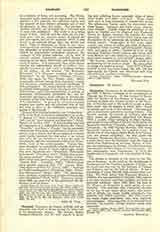

Campani, GIUSEPPE, an Italian optician and astronomer who lived in Rome during the latter half of the seventeenth century. His brother, Matteo Campani-Alimensis, and he were experts in grinding and polishing lenses, especially those of great focal length and slight curvature. These lenses were used in long telescopes of considerable power. The astronomer Cassini made his discoveries with these lenses. Campani also made many observations himself. Cassini called his attention to the spots on Jupiter, and he disputed with Eustachio Divini, an Italian optician, the priority for their discovery. His astronomical observations and the descriptions of his telescopes are detailed in the following papers: “Ragguaglio di due nuovi osservazioni, una celeste in ordine alla stella di Saturno, e terrestre l’altra in ordine agl’ instrumenti” (Rome, 1664, and again in 1665); “Lettere di G. C. al sig. Giovanni Domenico Cassini intorno alle ombre delle stelle Medicee net volto di Giove, ed altri nuovi fenomeni celesti scoperti co’ suoi occhiali” (Rome, 1666).
His brother, mentioned above, is also noted as a mechanician for his work on clocks. He was a priest in charge of a parish in Rome. Louis XIV of France ordered several long-focus lenses (86, 100, 136 feet respectively) for Cassini, who discovered with their aid additional satellites of Saturn.
WILLIAM FOX

